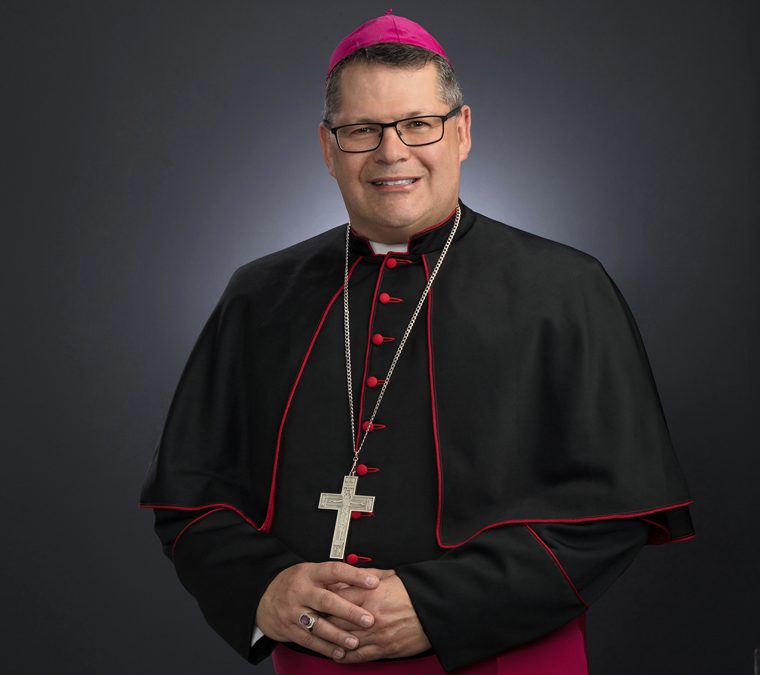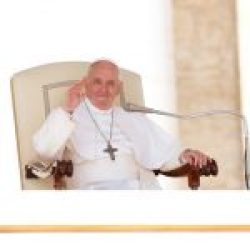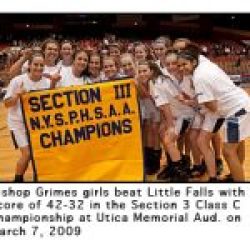This past Saturday, May 27th, was the fourth anniversary of the phone call that literally changed my life and I found out that Pope Francis had named me the Eleventh Bishop of Syracuse. A lot has happened since that phone call, but one thing I realize more than ever is that our loving God was calling me to a deeper intimacy with the communion of the Trinity — a deeper sharing in the life of the Father, Son and Holy Spirit — and to shake off any complacency from me. For the most part, I think this is happening, but I am still a work in progress!
I share my own spiritual journey with you because I believe our whole diocesan Church is about to receive a wonderful gift to grow in our own communion with God — Father, Son and Holy Spirit — as we enter the second year of our three-year national Eucharistic Revival. This year of the revival is meant to be observed specifically in the parishes of the United States and is to focus on three areas: (1) Education involving a renewed understanding of the Holy Eucharist, especially as experienced in the Holy Sacrifice of the Mass; (2) more chances for Eucharistic devotion; and (3) a renewal of the ministries essential to the celebration of Holy Mass in our parishes.
This Sunday, June 11th, as we celebrate the Solemnity of the Most Holy Body and Blood of Christ, the Diocese of Syracuse will also resume the distribution of the Precious Blood from the chalice to communicants who desire to do so. As noted by Fr. Christopher Seibt from the Office of Worship and RCIA in an April 6th communication:
The USCCB’s Norms for the Distribution and Reception of Holy Communion under Both Kinds in the Dioceses of the United States of America state that the Precious Blood has been distributed to the faithful since the earliest days of Christianity in fulfillment of Christ’s command to “take and eat… [and] take and drink” (no. 6). This ancient practice was generally discontinued during the scholastic era after the turn of the first millennium, due, in part, to concerns over spillage of the Precious Blood. However, recognizing the importance of the effective use of signs within the celebration of the liturgy, and reflecting on the institution of the Eucharist within the context of a sacred meal, the Second Vatican Council called for the reintroduction of the distribution of Holy Communion under both kinds in 1963’s Constitution on the Sacred Liturgy, Sacrosantcum concilium.
As I once heard a Passionist Father say in a homily on the Solemnity of the Most Holy Trinity (which we observed this past Sunday): “The Holy Trinity is not a mystery to be solved, but a relationship to be entered into.” He then went on to describe God as “personal and relational” and that this was sealed by “a kiss” — quoting the early Church Fathers, he stated that “the Holy Spirit is the kiss between Father and Son.”
Now before we get too squeamish over such overt affection — is it not true that the Holy Eucharist itself is none other than God [who is Love] made flesh … made real for the life of the world? Is it not our gathering each Lord’s Day around his altar … his holy table … with the Priest Presider who is known as In Persona Christi Capitis … a sharing in the “kiss” of God’s love for you and me? In fact, the priest as God’s instrument invokes the Holy Spirit over the gifts of bread and wine so that they will become the very Body and Blood, Soul and Divinity of Jesus for the assembly.
It is this realization that I would like to be the focus of all members of this Diocesan Church in the coming year. To further our recognition of the presence of the Risen One who comes to us in the breaking of the bread, I would like to invite you to join me at the New York State Eucharistic Congress at Our Lady of the Martyrs Shrine in Auriesville, N.Y., the weekend of October 20 – 22. You can find more information, a schedule of liturgies and events, and how to register at nyseucharisticcongress.org.
As the website notes:
It wasn’t enough for the Son of God to take on our humanity, even to suffer, die and rise for us and our salvation. He wanted to feed us and remain with us always until the end of time. That’s what he does in the Eucharist. In this New York State Eucharistic Congress we will thank him for this supreme gift and seek to bring others to thank him with us! Register today and bring your family and friends.
Let me conclude with one of my favorite liturgical antiphons associated with Corpus Christi — The Solemnity of the Most Holy Body and Blood of the Lord:
“How holy this feast in which Christ is our food; his passion is recalled; grace fills our hearts; and we receive a pledge of glory to come.” Amen.







